It’s a cool winter morning … that one weekend you managed to dodge the work around the yard to go and have a bit of fun at the end of a long, hard week. A light swirling mist rises from the water as the sun creeps over the hills – there’s barely enough light to see.
A lone mallard hen starts a slow landing circle, her shape clearly silhouetted against a brightening sky; she flies in low taking in the surrounding view below her … a friendly group of mallards emerges from the mist. She sees ripples float over the water, a landing bird’s wings flash below. She hears them calling away – they urge her in, a loud highball hen entices, while low feeding chuckles murmur quietly in the background.
It looks like a good place to be – a resting stop on a long haul from feeding. She settles into her final approach, with wings almost cupped.
Suddenly, a flash in the darkness from a large bush to her left checks the mallard during her landing run; at that moment, instinct kicks into high gear – her wings flare, their beats increase, and she climbs out over the lush green grass, rising at high speed. After gaining height, she flees, quacking with a loud tone of panicked alarm.
All that’s left rising up from the bushes is a few quiet swear words and a quick discussion … a laugh or two about ‘useless buggers’.
Camouflage Matters
This sort of thing happens to the best of us. No matter how experienced or inexperienced in the way of the waterfowl you are, we all get caught out. What this bird flared at was either movement in the blind, a shining face surrounded by the darkness of a letterbox-shaped shooting stand, or maybe the fact that what you were hiding in looked out of place in the environment.
If I look way back to when I started hunting birds, a great big box with a slot in the front was all you got. If you were lucky, a bit of scrub was attached and that was considered the ultimate in maimai blind design. Bigger was always better, and the must-haves were lounge chairs, couches and a nice big cooking area. Some almost went as far as bunkrooms and kitchens.
There’s nothing wrong with wanting comfort – some hunters spend their duck weekend or week during Opening living in the blind, and in all honesty, if you’re dropping grain in that perfect flight line with the highest bird numbers in your district, being completely concealed and natural-looking from the sky may make little difference; but if you hunt public land with hard-hunted birds or in an area where there’s a large number of private ponds, every little bit helps to give you and your crew the edge.
I, myself, prefer simple, fast-to-build small blinds with enough room for 3 to 4 hunters and the dog; I find it cuts back my time in pre-hunting season work. However, what I’ve found is that no matter what size or kind of blind you hunt from, looking natural to your surrounds will help create successful hunts.
In this article, I’ll try to give some insight on how to make your hide less visible to your quarry, from the maimai to the layout; hopefully I can show that sometimes a little bit of prep work can go a long way.
Make it invisible! That should be the new mantra of the waterfowl hunter. Working on your blind preseason can get pretty involved; it could be a new blind build, an enhancement, or if you’re really lucky, just a wee spruce-up camouflage-wise. My observation, when hunting, is that the better your main means of concealment blend into the natural cover that surrounds you, the better your chances are that waterfowl will commit to your spread. It’s not usual to have a big square box located right next to a waterbody, unless it’s a pump shed on an irrigation pond, and most birds won’t land near it for fear of the inevitable barrage they encountered from other places they may have already visited.
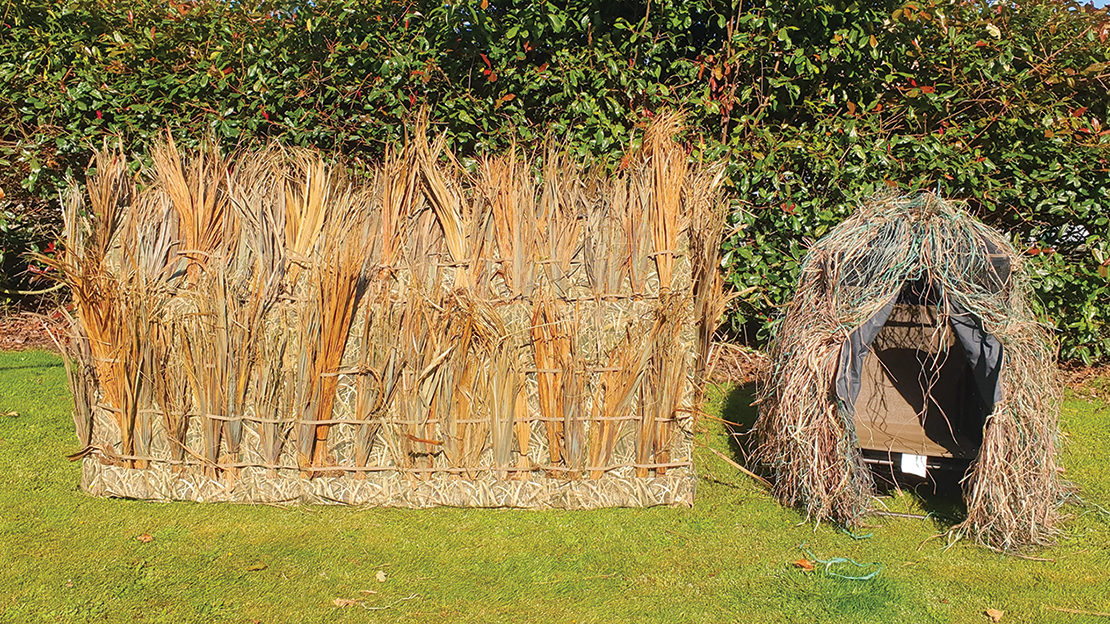
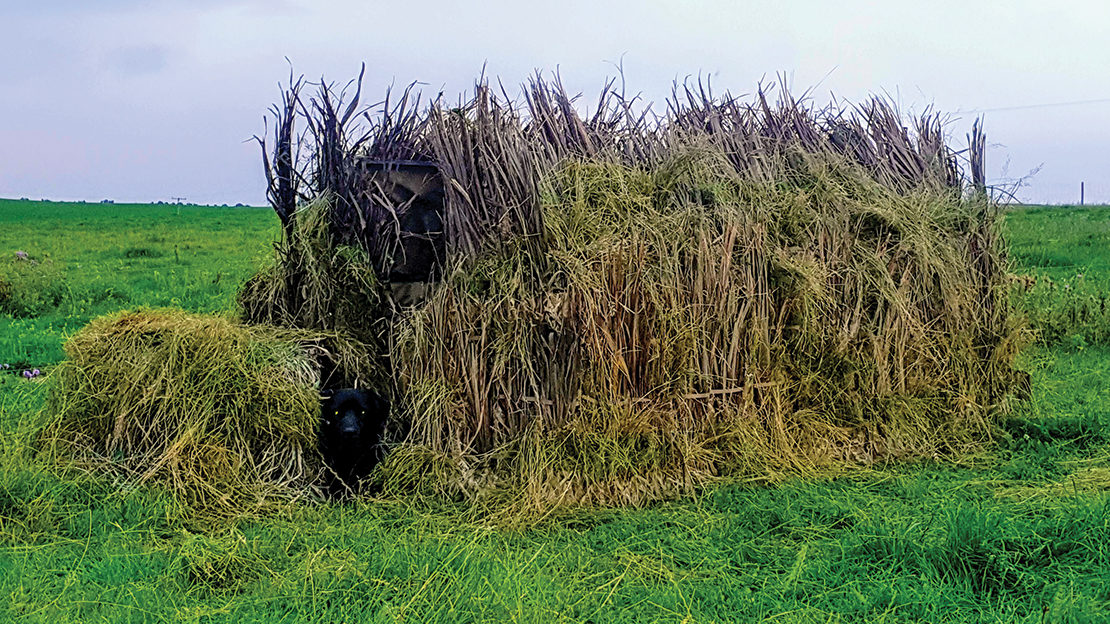
Waterfowl Vision
I’m only going to touch lightly on this topic here. It’s a vast and complex subject and a whole article could be written on this alone and all its intricacies. The only things we really need to concern ourselves with as waterfowlers are the basics – here’s a short, but hopefully helpful, glimpse of what our winged quarry can see.
Waterfowl have the ability to see two to three times further than humans, and the way their eyes are positioned on either side of their head gives them the ability to view 360 degrees. With a side-to-side head motion, their eyes can sort of create a three-dimensional picture for them to process. You know that time when everyone whispers, “They’re having a look”? You’re dead right … but at what? That’s the question.
They also have incredibly strong muscles in their eyes; they can adjust their corneas and lenses, giving a much more defined crisp image. Birds have an added comb structure within the eye called the pecten; this gives them an incredibly high ability to see motion; to them, the right movement can mean safety, but the wrong movement will mean danger.
A waterfowl’s colour perception is far richer than ours; they still see reds, yellows and blues, but they have a set of extra cones within their eyes that capture UV wavelengths. This gives them the ability to see clearly at first light and last light – those times when predators are lurking about; it also helps them to identify friendly birds.
Remember all those washing powders we buy at the supermarket? They’re chock full of UV brightener making us super visible to waterfowl – that’s just another wee thing to take on board.
If we rank a duck’s or a goose’s senses from top to bottom, it goes like this: sight, sound, touch, taste and finally smell. In other words, waterfowl see far better than they hear, and with the fact that they’re high above you, they have an unobstructed view for a huge distance … right into where you’re hiding. All this information cements the fact that being well hidden and staying as still as possible is of key importance in any hunt.
Concealment for Your Body
I want to start with the things we wear; regardless of what the old fellas say … camo is king. Out in the market, there are dozens of different camo styles, including grass and tree patterns, digital, and old-school military patterns. Whatever pattern or brand it is, camo will blur your shape into your surroundings – this may not be obvious to the new hunter and maybe sometimes the old. Wearing something akin to a white shirt in a dark blind is always going to scare every bird within 100 metres looking to land, especially if they’re already nervous after visiting other hunters.
You don’t need to be flash Harry – you just need to blend in enough not to be obvious. Nice drab greens and browns will hide you well enough, even in the tans of tussock; everything casts shadow, so colours like this will help you blend in.
Don’t forget your face and hands … some gloves and a face shield work well, or my favourite: get out the face paint. I have a beard, but if I think those birds are going to be tricky, I’m still not going to risk my hands or face being the things that stop me or a mate bagging that trophy bird.
One last quick mention … stay as still as you can; make sure you have your gun close at hand – that quick hand movement and shift forward to grab a gun in the front of the blind or that barrel wiggle in the layout has cost the hunter many birds.
Blinds – Start with a Good Base
When camouflaging a blind, the first place I like to start is with a nice, flat, drab-coloured paint – something that’ll withstand a bit of weather. The stuff I like to use is a fence paint available at The Warehouse … cheap and easy to get, but any good hardware store will have a supply – as long as it’s a drab earth tone you should be right. Paint will get rid of the shining steel and that out-of-place, light-coloured post that’s really obvious when viewed from the sky. The added bonus is … paint gives extra protection from rot. If it’s a new build, before each board or piece of steel is attached, I paint each bit inside and out. This might sound a bit OCD, but then you know you’ve got it well protected from the elements, and you don’t need to rebuild it every season.
Finding the right vegetation to surround a blind is the next step in the process. A big stationary blind is going to need big vegetation; a supply of manuka is the ultimate, in my opinion. For some, it may be hard to get, but if you can get a supply, jump on it; manuka is sturdy and will last for years. Another fast easy-to-put-up solution is manuka garden sheets – they can work just as well. I have a blind that’s completely covered in this; it was placed by a pond that’s surrounded by rank grass – this grass had grown long golden stalks. Every year, the only touch-up to complete its look was to stick in handfuls of hay all around it so that from the sky, it looked like the ground.
Another great base is the ever-versatile flax. Woven between netting, you can, over time, build up quite a good mat; as it browns off and shrinks, just keep weaving new flax in. With a few seed stalks poked about, you can give a real flax-plant-looking silhouette to the blind using this method. Don’t be afraid to add extra camo a few days before Opening Day if things are looking much greener or more burnt off than they did a few weeks ago; a fresh addition of green branches, green grass or golden hay will just add to your overall look. I don’t think there’s such a thing as too much camouflage when it comes to a big maimai style blind – I’d rather be a big bush than a big shed.
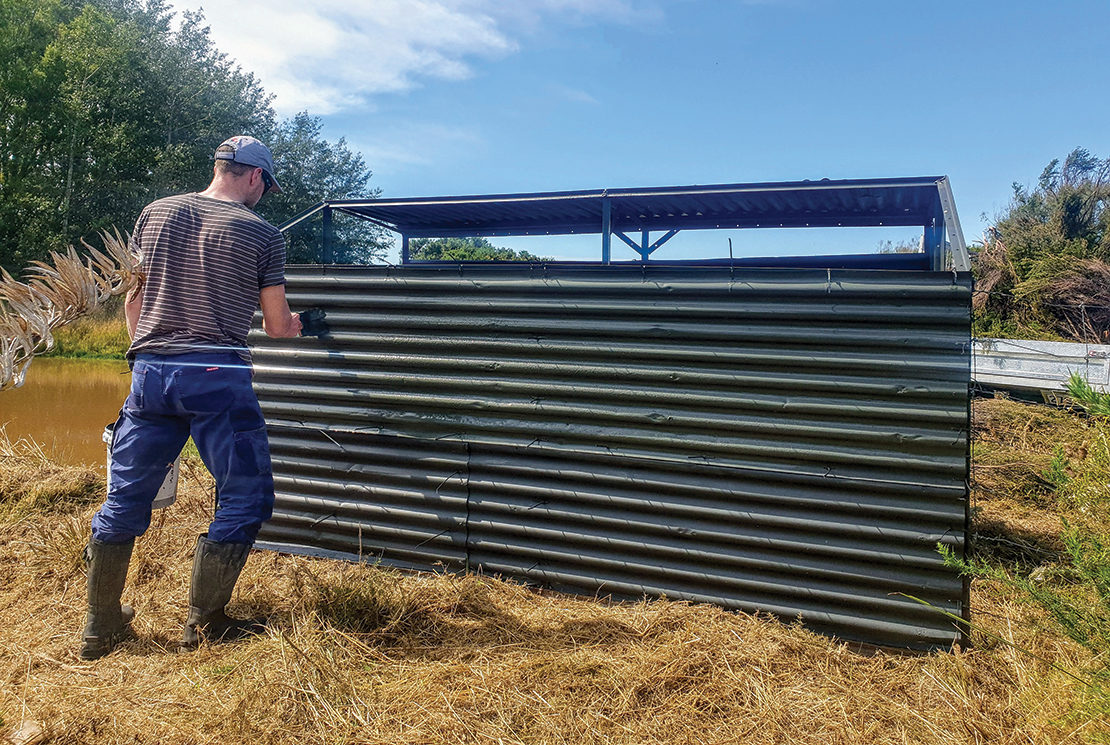
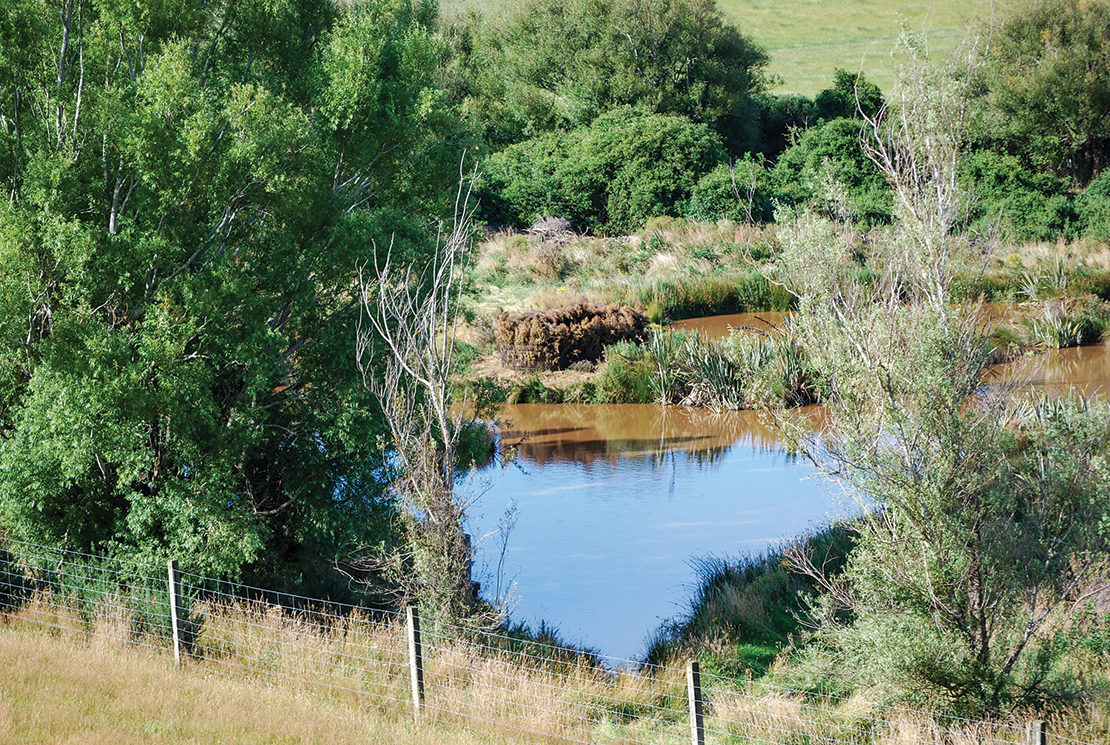
Layout and Pop-Up Blinds
These are what I probably spend most of my spare time during summer hiding in … the layout and pop-up blinds. It’s a brave new world for the waterfowl hunter. Setting yourself up in a paddock with full-body decoys – concealed in a layout – wasn’t even thought about in New Zealand for many years, but as we gleaned hunting practices from the United States, the layout has become a real asset to any hunter. Way back in the day, there were still some innovative hunters out there; they were the hardiest of souls willing to stave off the cold with hot coffee – lying on frozen ground, hidden by a camo net or pile of grass, surrounded by a full set of handmade silos.
Now this type of hunting is much more appreciated; comfortable padded blinds with waterproofing really make the cold ground a much more inviting spot to be, and it’s quite easy to have a wee kip if needs must. The best thing about these blinds is their low profile and the ability to set them up almost anywhere in a paddock or close to a waterbody.
Concealment-wise, it’s good practice to mud your blind; make a slurry of mud and water – cover the whole upper surface with a thick coating, wait till it dries, then remove the excess dry mud with a stiff broom. This helps dull down camo patterns and hopefully makes any UV brightener – that could be still present in fabric – disappear.
All layout blinds come with grass straps that you can thread your chosen coloured grass through; once fully loaded up with grass, you become nothing but a lump on the ground.
A-Frame Pop-Up Style Blinds
With these, the same advice pretty much applies … get that blind mudded. If you have the time, you can just cover the blind completely with your selected colour grass or, as I would do, add a permanent base. The extra touch-up cover of fresh grass or straw can be added – once your blind is erected – on the day of the hunt.
I’ve gone with both of these types as bases
for my blinds. First, dyed raffia for my one-man-seat blind and dog blind. It does look a bit ‘cousin it’ on plain grass, but nestled amongst the reeds with extra grass attached, it blends in well. The other A-frame type blind is clad in spray-painted, dry cabbage tree fronds – the same treatment of added cover before the hunt, and it blends in much the same.
With these types of blinds, you can go where the birds are; you don’t need to get them to come to you – they’re already on their way. You just need to scout and find Spot X. Remember, the main objective is to blur the lines between the natural and the artificial – the less boxy, the better. When all is said and done, as long as you try to match your spot to your surroundings as much as possible, it’s going to help you put birds in the bag.
Summary
To wrap this all up, making yourself more or less invisible to a bird with much better eyesight than us and having the ability to ignore any of the rules we think we’ve learnt over the years are key aspects to the way we hunt.
When it comes to waterfowl, most of us probably don’t think much about concealment, and to some out there, it may not be greatly important. But having a much better understanding of bird vision, concealment measures, and knowing the fact that those tricky, hard-pushed birds can sometimes act a little unusual at times … that extra small bit of work and preparation can make a significant difference to your harvest numbers, hopefully paving the road to becoming a more efficient, effective hunter.

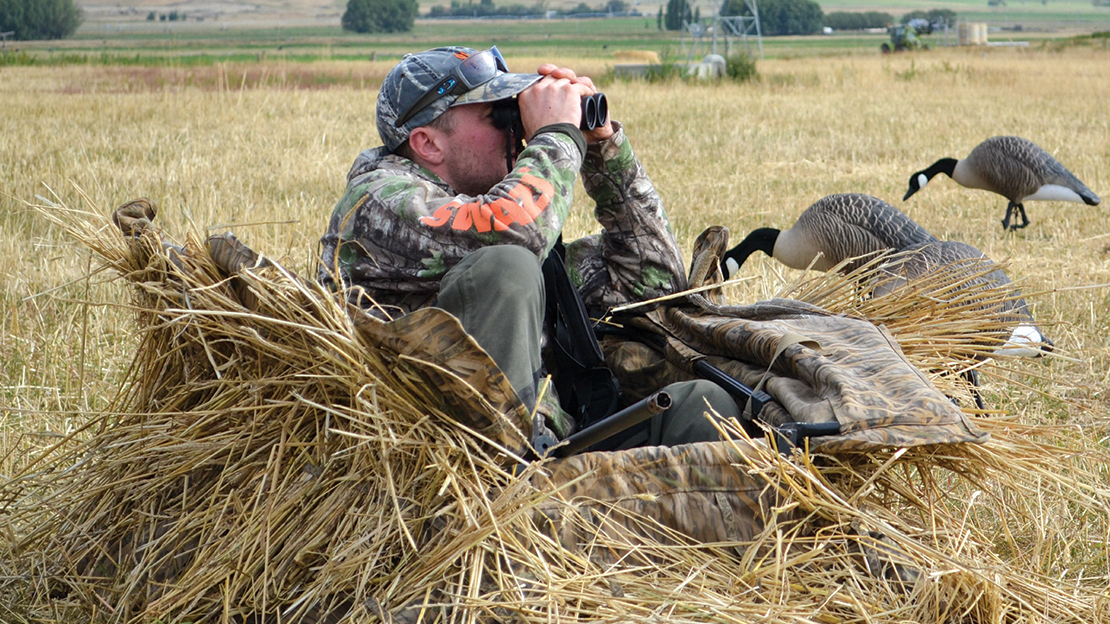

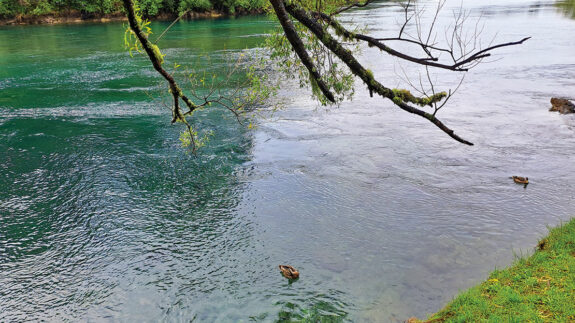

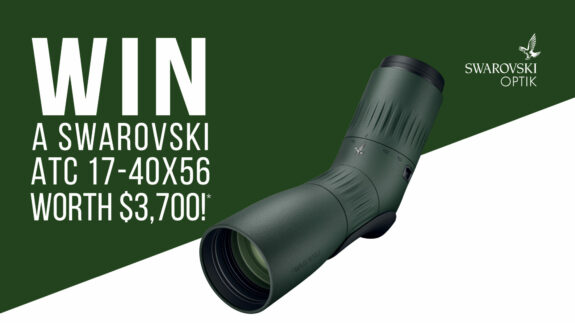
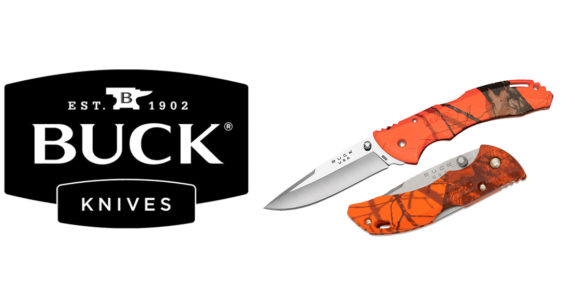
SHARE YOUR BEST PICS #NZRODANDRIFLE